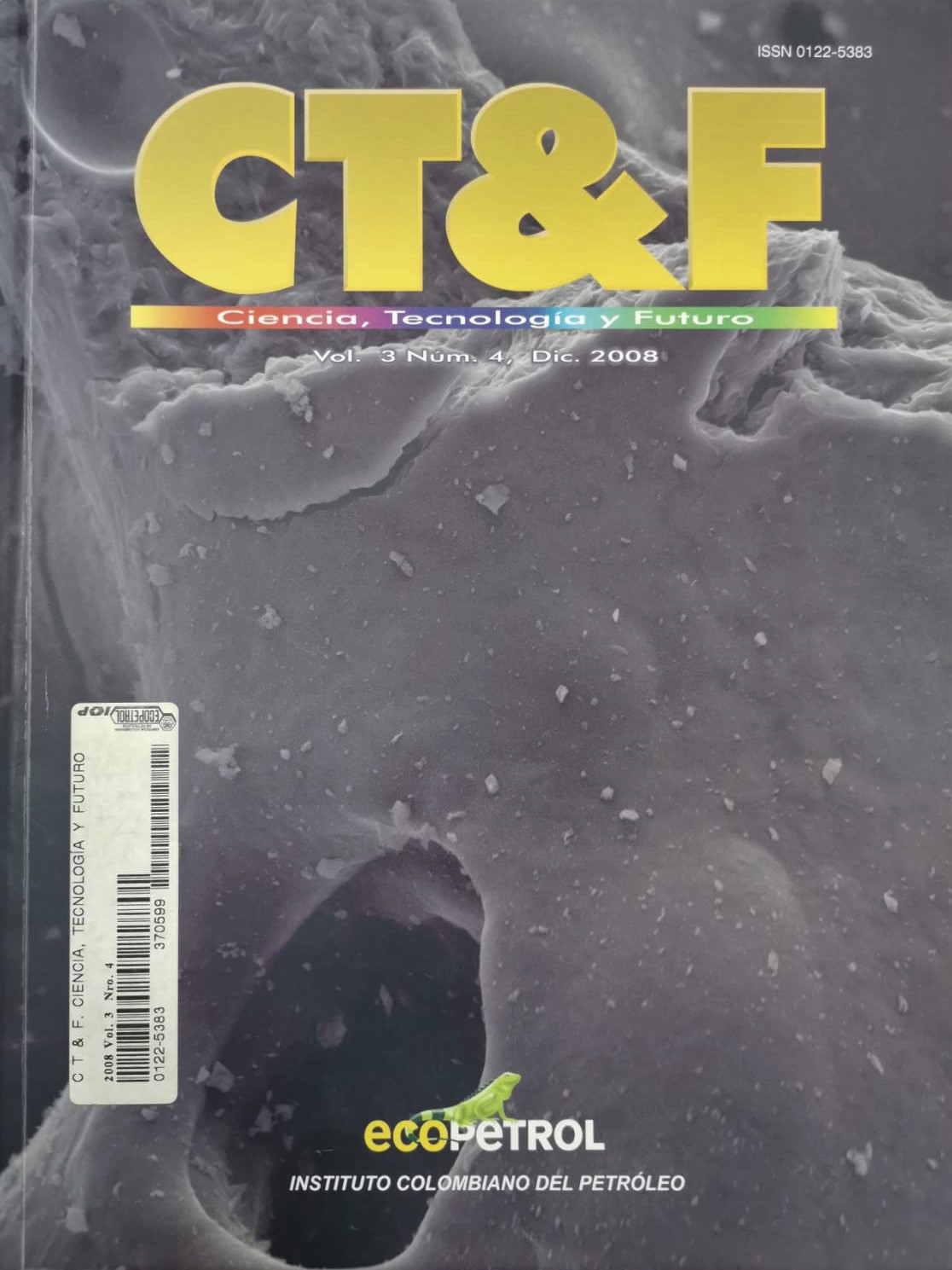Morphological classification of coke formed from the Castilla and Jazmín crude oils
Abstract
Amorphological classification of cokes from the Castilla and Jazmín Colombian crude oils was completed. These heavy-nature crude oils, after being fractioned during the refining stages, were physicochemically characterized and submitted to the coking process. The conclusions of this work are based on the characterization of the feedstock chemical composition according to the type of aromatic carbon. UV visible spectrophotometry and the corresponding micrographs obtained by a Scan Electron Microscope (SEM), in amplification intervals from 100X to 5000X for the samples of formed cokes, were analyzed. Results of this work allowed the determination of the morphological classification intervals in function of the polyaromatic compound concentration ratio (tetraromatic / triaromatic, and diaromatic / triaromatic) of the different coked feedstocks. Furthermore, high content of calcium and sulfur in the feedstocks promotes morphologies of the associated - shot type.
References
Ali, V. A. (2002). The Impact of Phase Behaviour on Coke Formation in Delayed Cokers. Thesis Master. Ing. Química. Toronto University, Canada, 220.
Badger, M., Mitchel, G. D., & Karacan, C. O. (2001). Characterization of heavy hydrocarbon cut by mass spectrometry routine and quantitative measurements. Fuel Science and Technol. Intl., 8 (9), 961-986. https://doi.org/10.1080/08843759008915968
Baldrich, C., & Novoa, L. (2007). Detailed Chemical Characterization of petroleum middle fractions by chemometrics analysis of their ultraviolet spectrum. CT&F - Ciencia, Tecnología y Futuro, 3 (3), 173-190.
Bouquet, M., & Brument, J. (1990). Characterization of heavy hydrocarbon cut by mass spectrometry routine and quantitative measurements. Fuel Science and Technol. Intl., 8 (9), 961-986. https://doi.org/10.1080/08843759008915968
Elliot, J. (2000). Shot Coke: Design & Operations. http://www.fosterwheeler.com/publications/tech_papers/ oil_gas/shotcoke.pdf
Gray, M. R. (2003).Tutorial on Upgrading of Oil sands Bitumen. http://www.ualberta.ca/~gray/~Library/Tutorials/ Upgrading
Gray, R. J., & Marsh, H. (1989). Introduction to carbon science. New York: Butterworth.
Karacan, C.O., & Badger, M. (2003). Effect of steam injection on pore structure and distribution in coke samples produced by delayed coking. Energy & Fuel, 82: 909-917. https://doi.org/10.1016/S0016-2361(02)00395-2
Kelemen, S. R., Siskin, M., Gorbaty, M. L., Ferrughelli, D. T., Kwiatek, P. J., Brown, L. D., Eppig, C. P., & Kennedy, R. J. (2007). Delayed coker coke morpholo-gy fundamentals: mechanistic implications based on XPS analysis of the composition of vanadium- and nickel-containing additives during coke formation. Energy & Fuels, 21: 927-940. https://doi.org/10.1021/ef060493e
Keller, A., Kovacs, R., & Homann, K. H. (2000). Large molecules, ions, radicals and small soot particles in fuel-rich hydrocarbon flames. Part IV. Large polycyclic aromatic hydrocarbons and their radicals in a fuel-rich benzeneoxygen flame. Chem. Chem. Phys., 2: 1667-1675. https://doi.org/10.1039/a908190i
Loison, R., & Marsh, A. (1989). COKE, Quality and Production. New York: Butterworth.
Murray, R. G., Elliott, J. W, & McCaffrey, W. C. (2005). Asphaltene fluid properties at process conditions. J. Petroleum. Institute, 48 (4), 181-188. https://doi.org/10.1627/jpi.48.181
Picón, H. J., & Mahecha, C.A. (2001). Manual de Operación Planta Piloto de Coquización, Viscorreducción y Pirólisis. División de Procesos no Catalíticos. Manual de Operación, Instituto Colombiano del Petróleo (ICP) - Ecopetrol S.A.
Siskin, M., Kelemen, S. R., Eppig, C. P., Brown, L. D., & Afeworki, M. (2006). Asphaltene Molecular Structure and Chemical Influences on the Morpho-logy of Coke Produced in Delayed Coking. Energy and Fuels, 20:1227- 1234. https://doi.org/10.1021/ef050389h
Siskin, M., Kelemen, S. R., Gorbaty, M. L., Ferrughelli, D. T., Brown, L. D., Eppig, C. P., & Kennedy, R. J. (2006). Chemical Approach to Control Morphology of Coke Produced in Delayed Coking. Energy and Fuels, 20: 2117-2124. https://doi.org/10.1021/ef060261f
Sullivan, R. F., Boduszynski, M. M., & Fetzer, J. C. (1989) Molecular Transformations in Hydrotreating and Hydrocracking. Energy and Fuels, 3: 603 -612. https://doi.org/10.1021/ef00017a013
Wang, G. (2005). Molecular Composition of Needle Coke Feedstocks and Mesophase Development During Carbonization. Ph. D. Thesis, The Pennsylvania State University, University Park, PA, 299.
Wentzell, P., Andrews, D., Wall, J., Cooley, J., & Spencer, P. (1999). Estimation of hydrocarbon types in light gas oils and diesel fuels by ultraviolet absorption spectroscopy and multivariate calibration. Canadian Journal of Chemistry, 77 (3), 391-398. https://doi.org/10.1139/v99-041
Zander, M., & Collin, G. (1993). A review of the significance of polycyclic aromatic chemistry for pitch science. Fuel, 72 (9), 1281-1285. https://doi.org/10.1016/0016-2361(93)90126-M
Downloads
Copyright (c) 2008 Creative Commons Reconocimiento-NoComercial-CompartirIgual 4.0.

This work is licensed under a Creative Commons Attribution-NonCommercial-ShareAlike 4.0 International License.
| Article metrics | |
|---|---|
| Abstract views | |
| Galley vies | |
| PDF Views | |
| HTML views | |
| Other views | |












